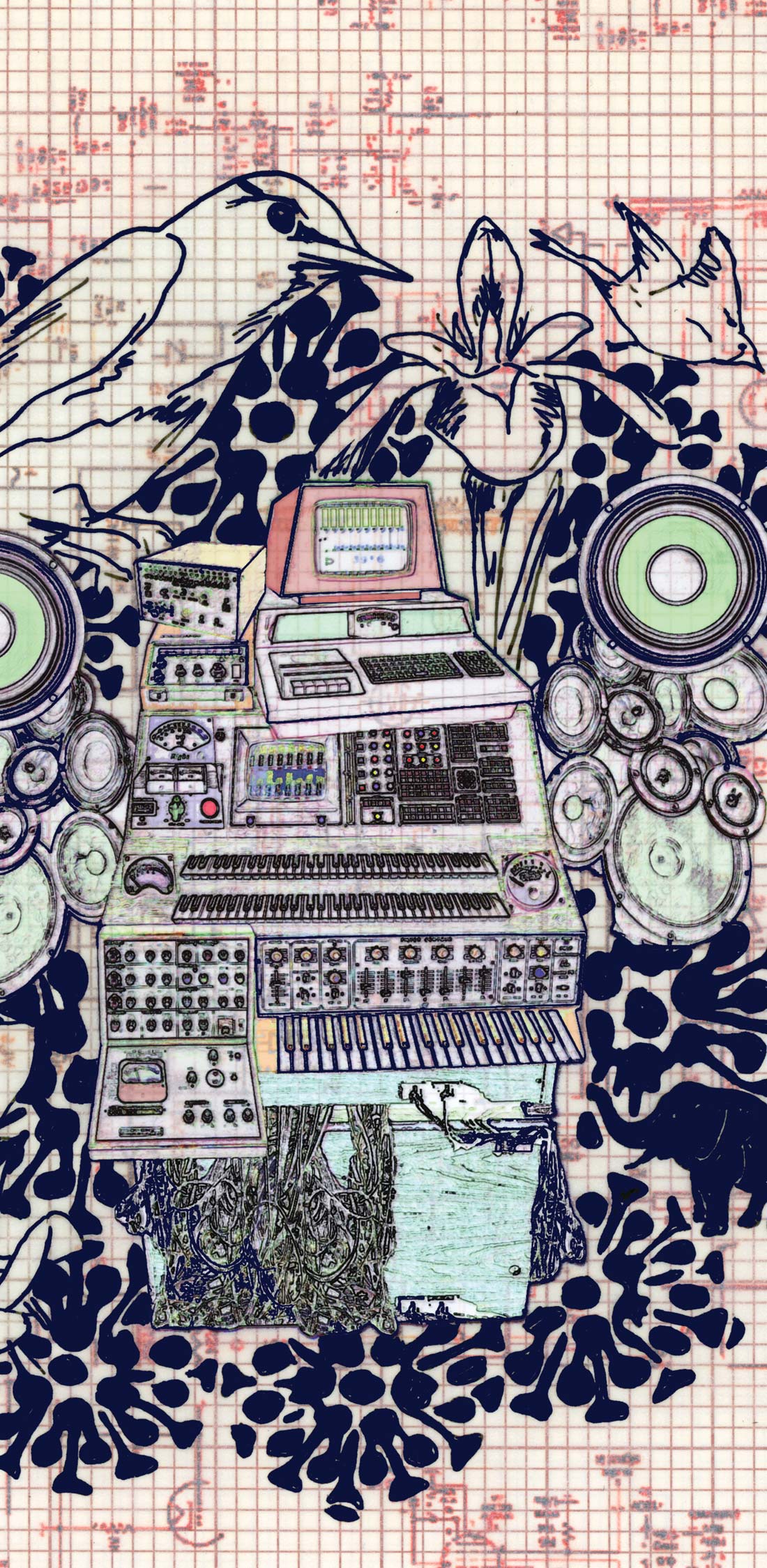Recently, there was a thread on the Tape Op messageboard linking to Plate-Sonics, a new company producing plate reverbs in Peoria, Illinois, only 40 minutes away from my studio. I immediately emailed them because I wanted to go and hear one in person. Dan and Brett of Plate- Sonics were more than happy to bring me one of their Cathedral 3 ft x 6 ft plates for a week of mixes I had coming up with Backyard Tire Fire.
The Plate-Sonics plates are unique and affordable, partly because they are a passive design. There is also no housing like on the "classic" plates of the past. I found running straight from my console's sends did not provide enough level to really drive the plate, so I've been patching through the headphone amp that is also in the live room along with the plate itself. I return through two mic preamps on the console via DI boxes.
The first thing I noticed on my first listen was that it was darker than I expected. I decided to patch an EQ into the send, and I was able to dial out some of the low-mid build- up. I've also been patching a short delay on the send as many engineers used to do with plates of old (hence the "pre-delay" function on many digital reverbs). A little EQ and sometimes compression on the return can really bring this reverb to life.
One of my biggest observations of this unit is that it's totally unique compared to what most of us think of when someone says the word "reverb." I usually think of tizzy and unrealistic sustain, even with short times. Or some may think of the sound of a spring reverb in a guitar amp, often long and lush, but still obvious. The vibe I get from the Plate-Sonics Cathedral is more of a feeling of presence. I feel like there is a halo or glow around the source. It works particularly well for vocals. I tend to mix vocals dry, partly because I often find reverb boxes detract and distract me as a listener. The Cathedral, on the other hand, adds an often unobtrusive, enveloping warmth/feel/vibe to the voice. Also, guitars get added depth from the plate, and Hammond organ can be pushed back just a touch to help sit in a supporting role.
When Dan and Brett delivered the plate, they also mentioned how they had some great success playing live instruments to the plate and then tracking the output. I got a really haunting sound on piano doing this while somebody was just goofing around on the studio upright. I also personally was playing drums for Bay-Area artist Adam Sullivan recently. One of the songs was a slow 6/8 for which I ended up cutting two different drum parts: one version with mallets and a repeating tom pattern, and another with a bit more traditional drumming. I decided to record the return from the plate while I was playing the drums. The sound was quite interesting, and I really hope Adam decided to use it in the mix.
If you're looking for a unique, interesting, and out of the ordinary reverb (and you have the space), I highly recommend considering one of Plate-Sonics three offerings. After a few weeks of having the option, I decided that the Cathedral had to stay. ($850 direct plus freight; www.platesonics.com)




_disp_horizontal_bw.jpg)